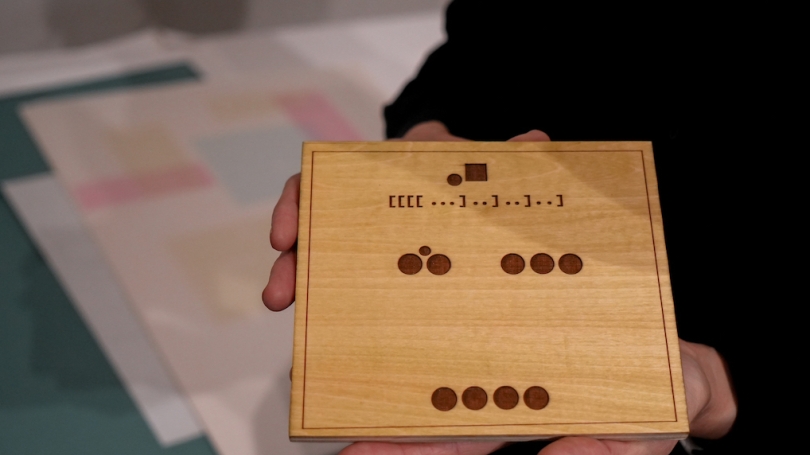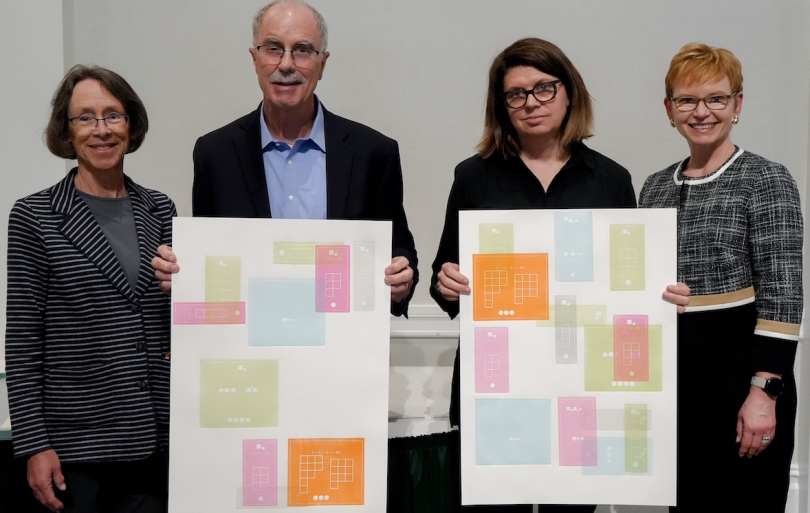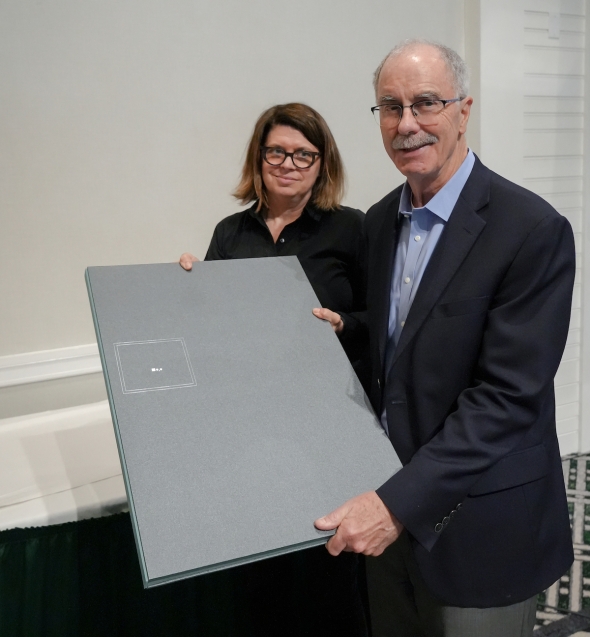

Associate Professor of Studio Art Tricia Treacy created a gift for President Philip J. Hanlon '77 on behalf of the Faculty of Arts and Sciences that was inspired by a mathematics table from one of his research papers.
At the conclusion of the spring term meeting of the Faculty of Arts and Sciences, Dean Elizabeth F. Smith presented President Philip J. Hanlon '77 and Gail Gentes with a one-of-a-kind gift on behalf of the Faculty of Arts and Sciences.
Hanlon will conclude his 10-year tenure as Dartmouth's 18th president on June 11. Throughout his presidency, he made it a priority to teach at least one term a year. And following a sabbatical, he plans to return to teaching in the mathematics department.
"A talented mathematician and dedicated teacher, a hallmark of Phil's presidency has been his continued engagement, over the past 10 years, as a scholar and teacher," Smith said. "As many of you know, I am personally interested in the intersection of art and science. A brainstorming session of my team led to the idea to ask professor of studio art Tricia Treacy to create an original work of art that draws inspiration from Phil's legacy as a teacher and scholar at Dartmouth."

An interdisciplinary artist who weaves together print media, languages, and design, Treacy has received numerous awards for her work, including a Rome Prize in Design from the American Academy in Rome. Her work has been exhibited at collections around the world, including the Watson Library at the Metropolitan Museum of Artand the National Library of the Netherlands.
In an effort to learn about Hanlon's scholarship, Treacy spoke with math and computer science professor Peter Winkler, and in that conversation a paper Hanlon co-authored in 2020 in the journal Advances in Mathematics became a point of interest.
A mathematical table from the paper was the conceptual inspiration for the gift: two prints made from laser-cut Japanese Shina woodblocks on Italian Incisioni paper in the Dartmouth College print shop, using a French tool etching press.
Information from this table was translated visually to create a new graphic system of information that hints to a mysterious prompt for meaning in patterns. All the letters, for example, became circles. Colors were influenced by grids and algorithm color patterning.

"Tricia's work questions tensions between communication platforms, language, systems, and structures in our observed and unnoticed environments," Smith said.
Treacy collaborated closely with senior studio art major Isaac Leota '21 and her studio assistant, Maggie Minor, on the various steps on this newly translated visual architecture, which were presented with the original mathematics table in a custom portfolio box. Treacy also made three additional sets of prints for Hanlon's collaborators.
"Phil, on behalf of the Faculty of Arts and Sciences, thank you for your leadership," Smith said. "We're deeply grateful for your service to the College and look forward to welcoming you back to the faculty!"
Reflecting on the process of creating the gift, Treacy said that she was grateful for the creative freedom.
Pointing to an element from the mathematics table newly translated onto one of the woodblocks, she asked Hanlon, "So, what does this symbol mean for you?"
"It's a long story," Hanlon said.